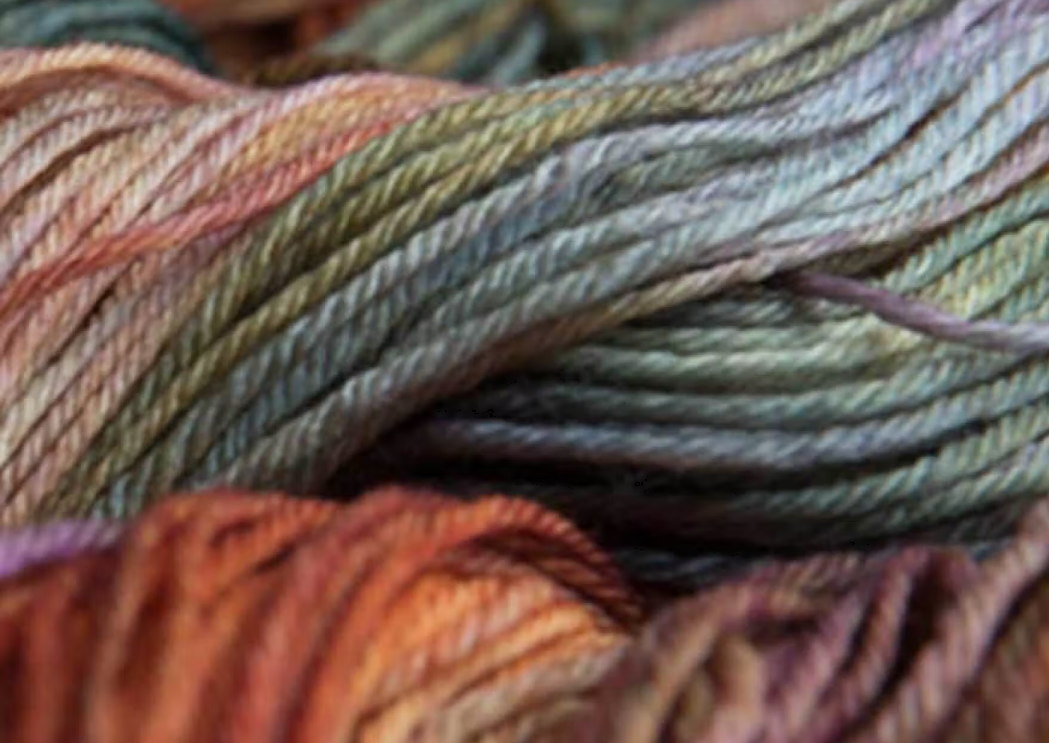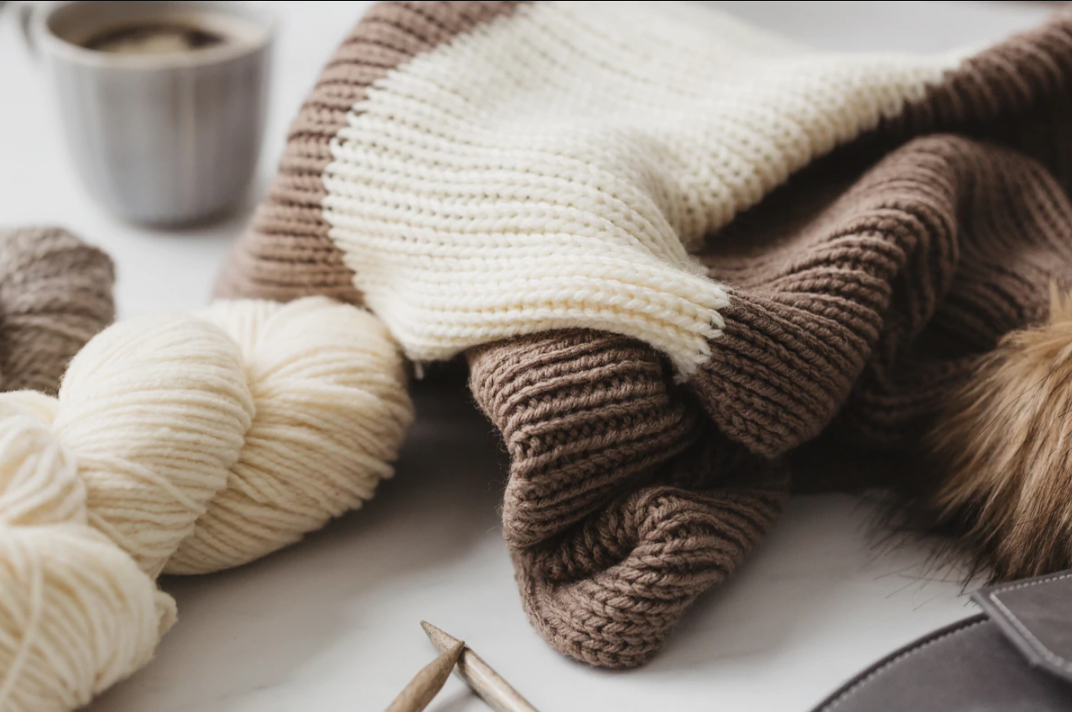Yarns are made up of a variety of fibres, blends, and materials that can be difficult to distinguish. This can make shopping for yarn challenging if you’re a beginner – how are you supposed to tell the difference between an animal, plant, and synthetic fibres? More importantly, how will you know what type of textile each yarn will produce? To help you out, let’s dive into the cuddly, cosy world of yarn fibres!

Best Fibres for Knitting & Crochet on the Market
Sirdar Yarns
Established in 1880 in the UK by the Harrap brothers, Sirdar is a popular name with a long tradition in knitting and crochet. Through the years, the Sirdar knitting wool has become a synonym for premium quality yarn through the years because it’s made from natural fibres only. Moreover, the brand offers a stunning collection of knitting and crochet yarns in a variety of fibre combinations, ranging from acrylics to polyamides and other synthetics. However, natural fibre is still their specialty.
For instance, their Sirdar Cotton DK comes in a wide range of shades, is ideal for all kinds of seasonal projects, and is vegan friendly too. On the other hand, Sirdar Heart & Sole sock yarn’s funky self-striping colourways also get our vote – not just for socks but also for shawls and fingerless mitts!
Because of their quality, softness and easy care characteristics, Sirdar knitting wool and various all-natural fibre combinations have been the top knitting choice for moms and grandmas for years. So, if you’re looking for a unique, appealing and long-lasting yarn, Sirdar is your safest bet!
Malabrigo
Malabrigo is a yarn company with a wide range of high-quality yarn that can improve the quality of any knitting project. Because of its high quality and low price, it is one of the best choices for luxury yarns.

Malabrigo yarn also includes a fun new sock yarn that isn’t available anywhere else. It’s a luxurious silk and merino blend that’s a dream to work with. Knitters adore this brand because of the vibrant, candy-like colours available.
Kettle dyeing is a technique that the company has mastered. The dye is added to a large pot but not completely blended during this process. They achieve subtle variegation by ensuring that the dyes do not completely mix. This makes working with Malabrigo yarn even more enjoyable.
Types of Yarn Fibres
Animal Fibres for Yarn
Wool
Wool is the hairy coat of a sheep, goat, or other hairy mammal. Sheep’s wool is the most popular and widely available animal fibre for yarn crafts. It’s warm and breathable, stretchy, has thermoregulating and absorption properties, and it’s naturally fire retardant, making it an excellent choice for garment knitting. Moreover, when it comes to the types and textures of wool, there are endless sheep and sizes to choose from!
Wool is also a naturally renewable fibre, and the animals that produce wool for spinning into yarn are part of the natural carbon cycle, making it even more environmentally friendly! Woollen sweaters and cardigans also have a longer lifespan, and when it’s time to part with your beloved woollen sweater, the yarn degrades quickly.
Merino wool is the finest type of wool appreciated for its smoothness and luxurious softness. Luxury knitting and crochet projects and commercial garment production are both affordable thanks to well-established, large-scale production in Australia, New Zealand, and Italy.

Another type of wool valued and reserved for making textiles exclusively for royalty is the Alpaca wool made from a small llama or a camel with no humps. Alpaca is free of lanolin and hypoallergenic, ideal for even the most sensitive skin. It’s heavier wool, perfect for winter clothing and accessories.
Silk
Silk is the ultimate luxury fibre, made from the silkworm’s cocoon. Silk is smooth and delicate to the touch, but it’s surprisingly strong and long-lasting for ambitious crafters working on precious heirloom projects. It’s frequently mixed with other fibres like wool, alpaca, or cotton to give a yarn blend its drape and sheen.
Plant Fibres for Yarn
Cotton
Cotton is a strong, non-stretch, breathable fibre that can be turned into cool crochet and knitting projects worldwide. It’s perfect for amigurumi and homewares, and it’s used to make light, smooth fabrics for luxury bed sheet sets or airy summer garments.
Linen
Linen is made from a processed fibrous flax plant. Linen, like cotton, lacks elasticity but is extremely cool, crisp, and durable. It’s perfect for casual summer wear, and it softens and relaxes with each wash.
Bamboo
Crocheted or knitted bamboo fabric is soft and light, with a cool feel similar to cotton. It is gentle on even the most delicate skin, is easy to clean, and has antibacterial properties, making it ideal for babywear. Because it isn’t a stretchy yarn, it’s usually found as a blend of bamboo and another fibre to add some stretch.
Synthetic Fibres for Yarn
Acrylic
The possibilities are endless with the acrylic yarn. Often made to look like natural fibres, the Acrylic yarn has several advantages. It is a wearable solution for anyone with allergies; it is very hard-wearing, inexpensive to produce, easy to care for, machine washable, and highly versatile. It’s frequently mixed with other fibres to stabilise a blend, such as wool or cotton. However, acrylic yarns are not biodegradable.

Nylon
Nylon is the tough little superhero in the world of yarn. Nylon yarn, which combines resilience and elasticity, is ideal for garments like socks and fitted gloves that must withstand daily stretching and bendy toes! A nylon blend improves the finished garments’ durability and ‘washability.
Sensitive Skin & Allergies
Crocheters and knitters with sensitive skin know the agony of an itchy sweater or scratchy scarf all too well! Animal fibres’ multiple overlapping scales irritate sensitive skin, and for those allergic to lanolin, the waxy natural grease produced by the wool-producing animal, the symptoms alone can be enough to put you off crocheting and knitting completely. Thankfully, the days of having to suffer for your style are over. Alternative fibres range from lanolin-free animal fibres such as alpaca, llama, and camel to plant-based yarns, synthetics, and silk, thanks to snazzy modern processing methods.



